Abstract
Representative dilution tube sampling techniques for particulate and gas phase vehicle emissions are described using Teflon filter media and XAD-2 resin. More than 90% of the total gas (C8-C18) and particulate direct acting Ames assay mutagenicity (TA 98) was found in the particulate phase. The gas and particulate phase material was fractionated by HPLC into nonpolar, moderately polar and highly polar chemical fractions. The moderately polar chemical fraction of the particulates contained more than 50% of the direct acting Ames assay mutagenicity for the total extract. The concentration of oxygenated polynuclear aromatic hydrocarbons (oxy-PAH) and nitrated PAH (nitro-PAH) identified in the moderately polar particulate fractions are given. Nitro-PAH account for most of the direct-acting (TA 98) Ames assay mutagenicity in these moderately polar fractions. Reactions and kinetic expressions for chemical conversion of PAH are presented. Chemical conversion of PAH to nitro-PAH during dilution tube sampling of particulates on Teflon filters and gases on XAD-2 resin is a minor problem (representing 10-20%, on the average, of the 1-nitropyrene found in extracts) at short (46 min) sampling times, at low sampling temperatures (42 degrees C), and in diluted exhaust containing 3 ppm NO2. Particulate emissions collected from dilution tubes on filter media appear to be representative of what is emitted in the environment as based upon a comparison of highway and laboratory studies.
Full text
PDF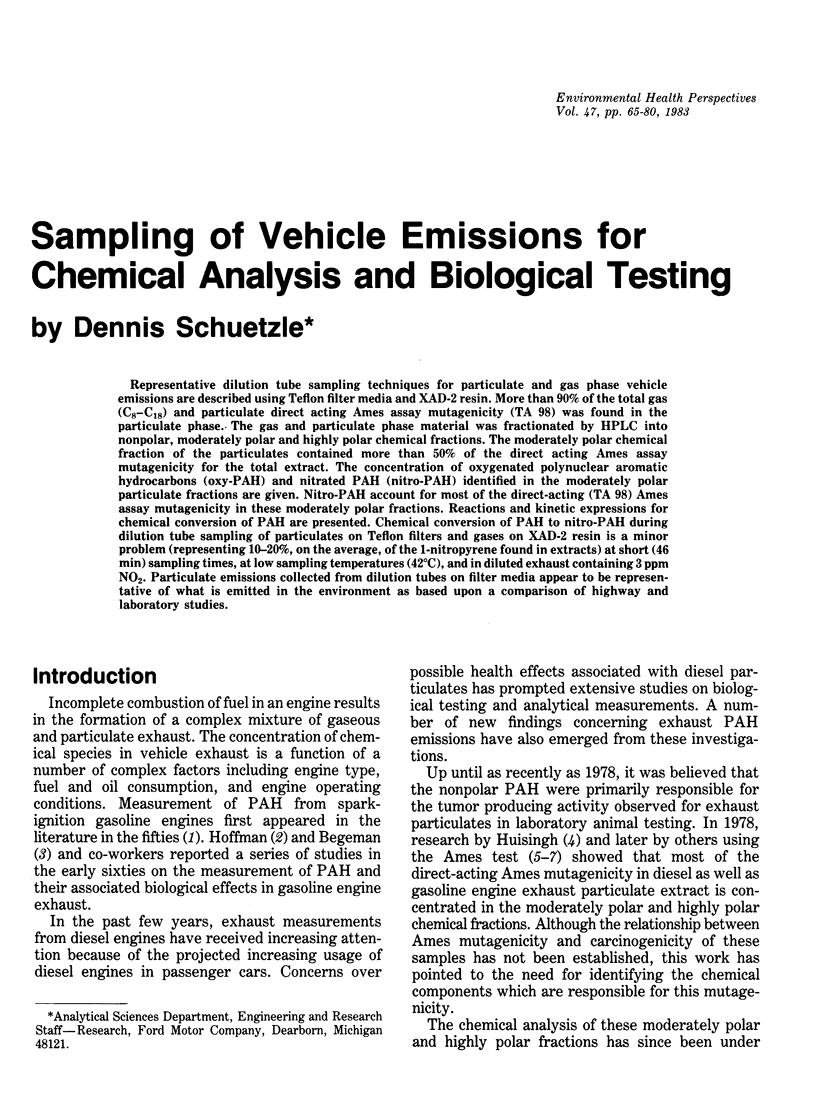
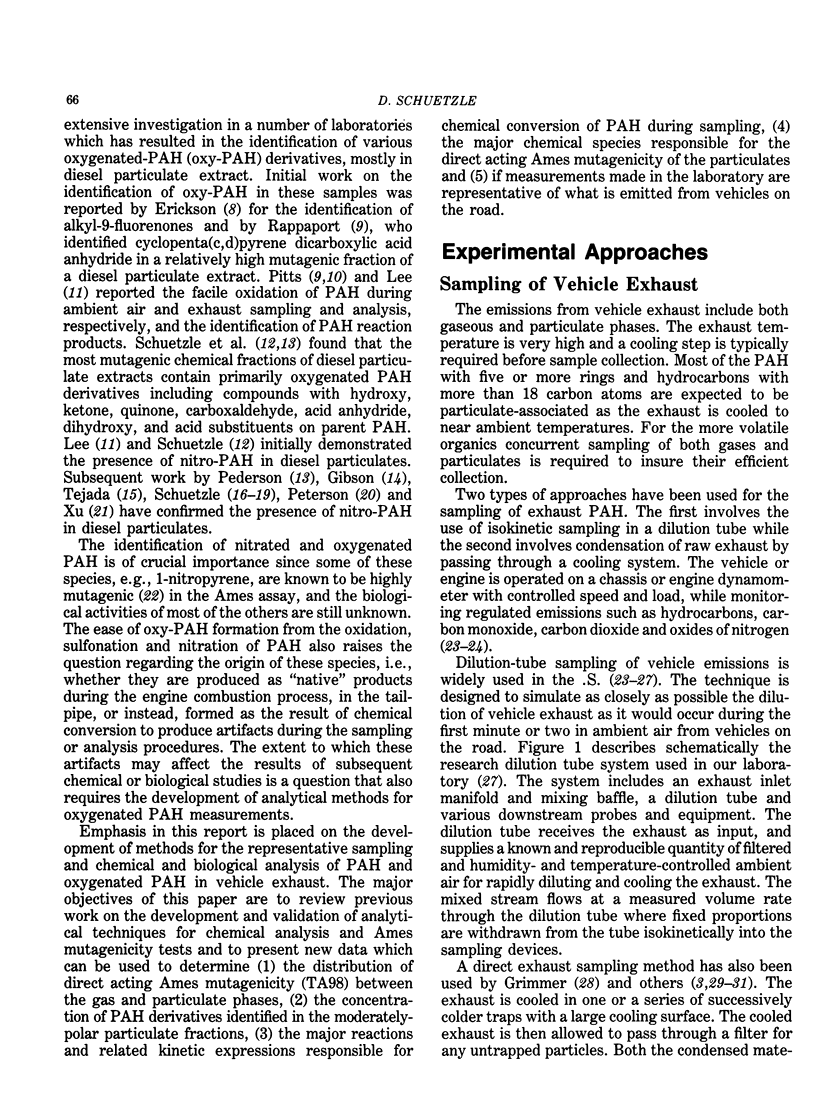



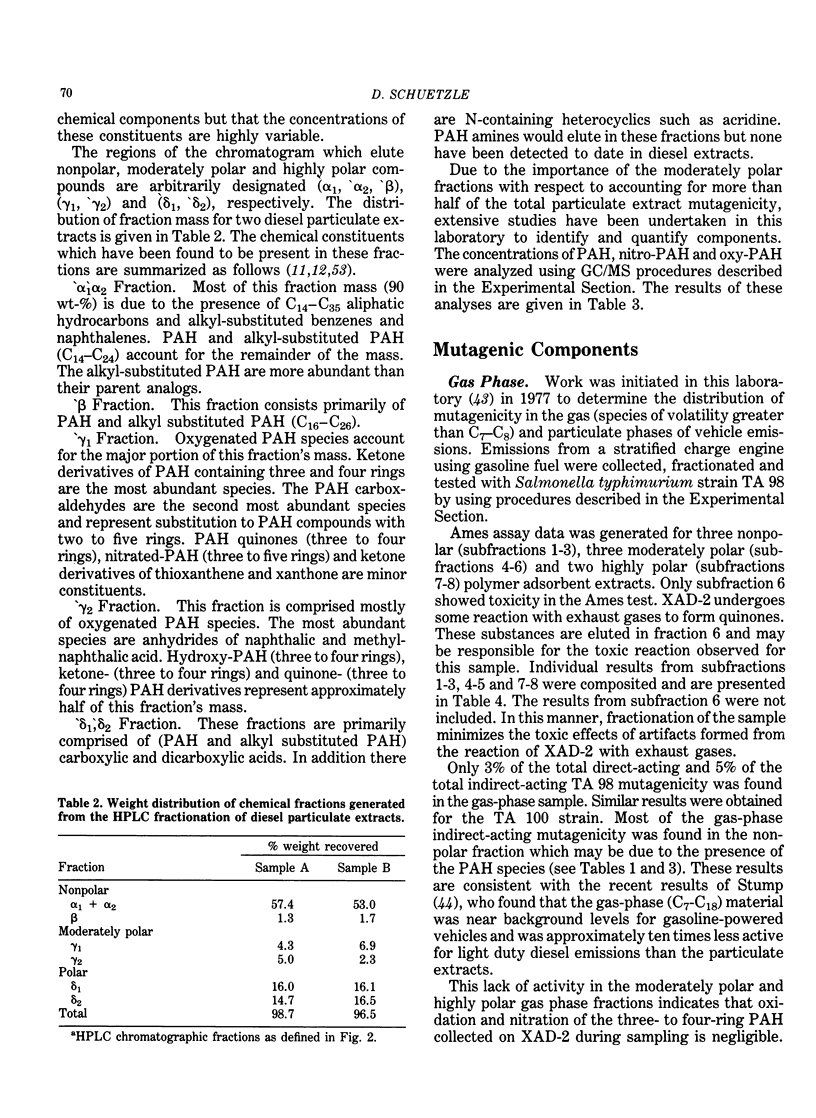

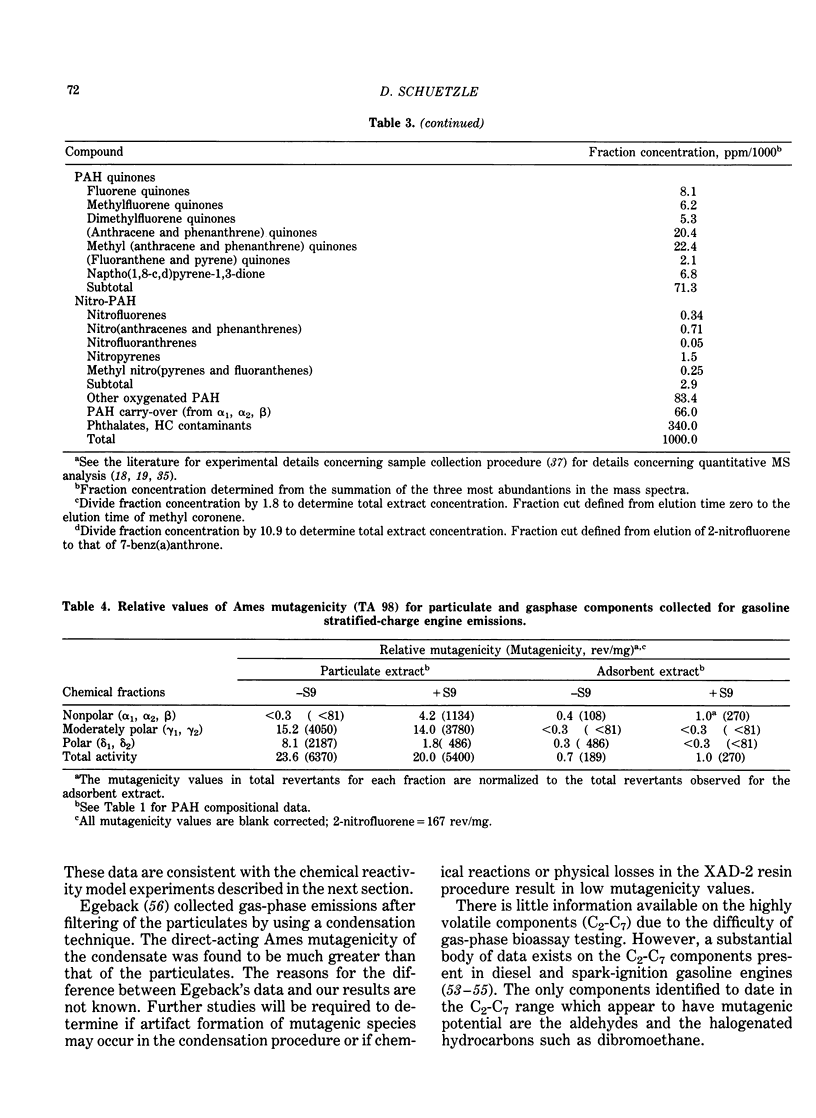
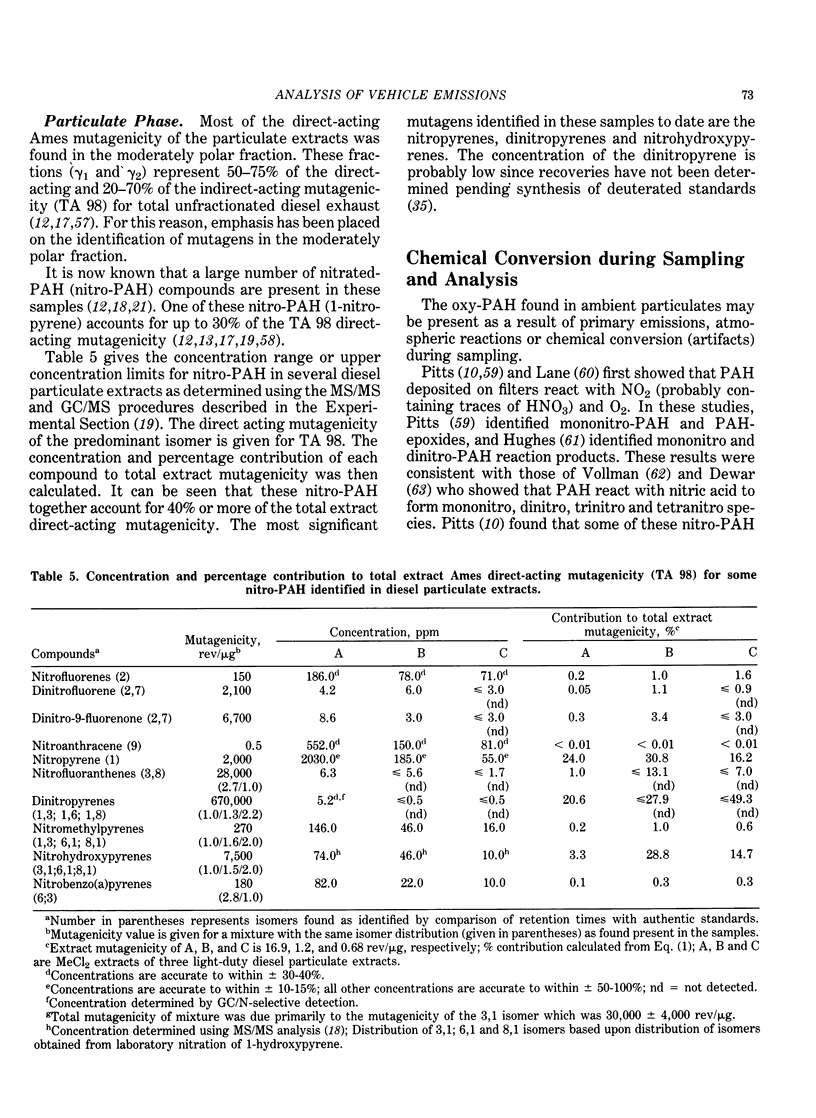


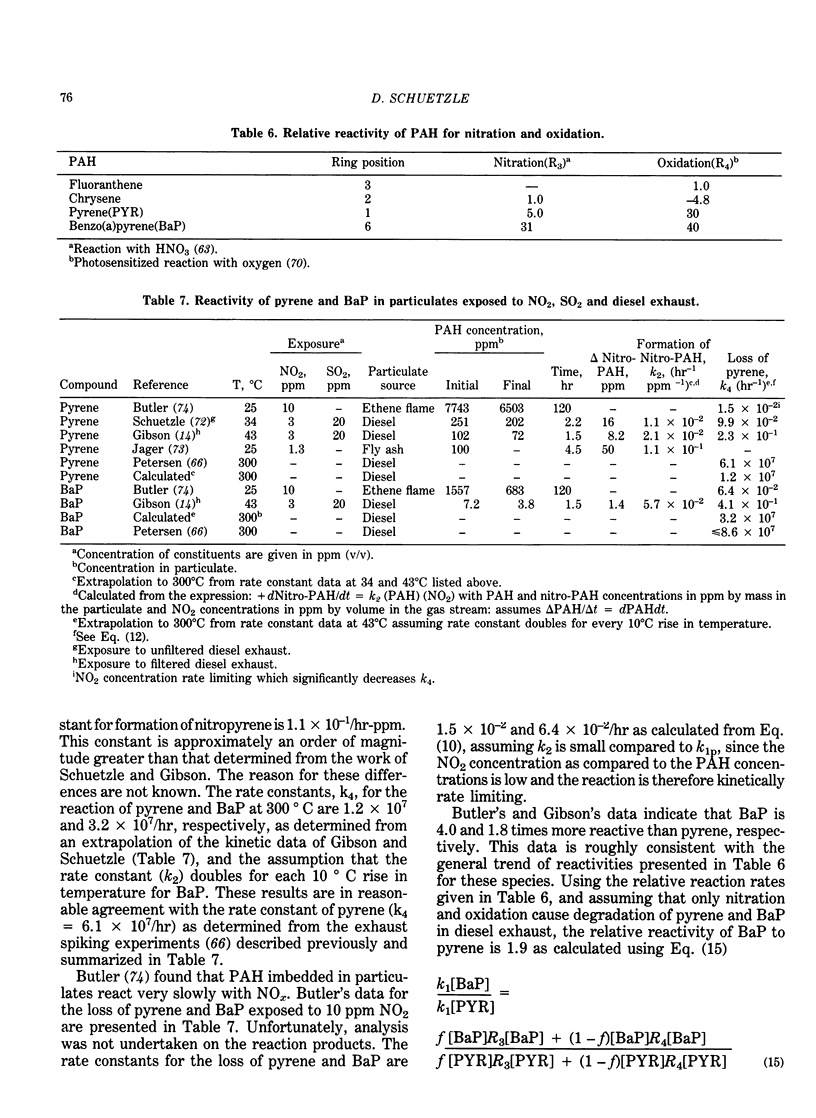
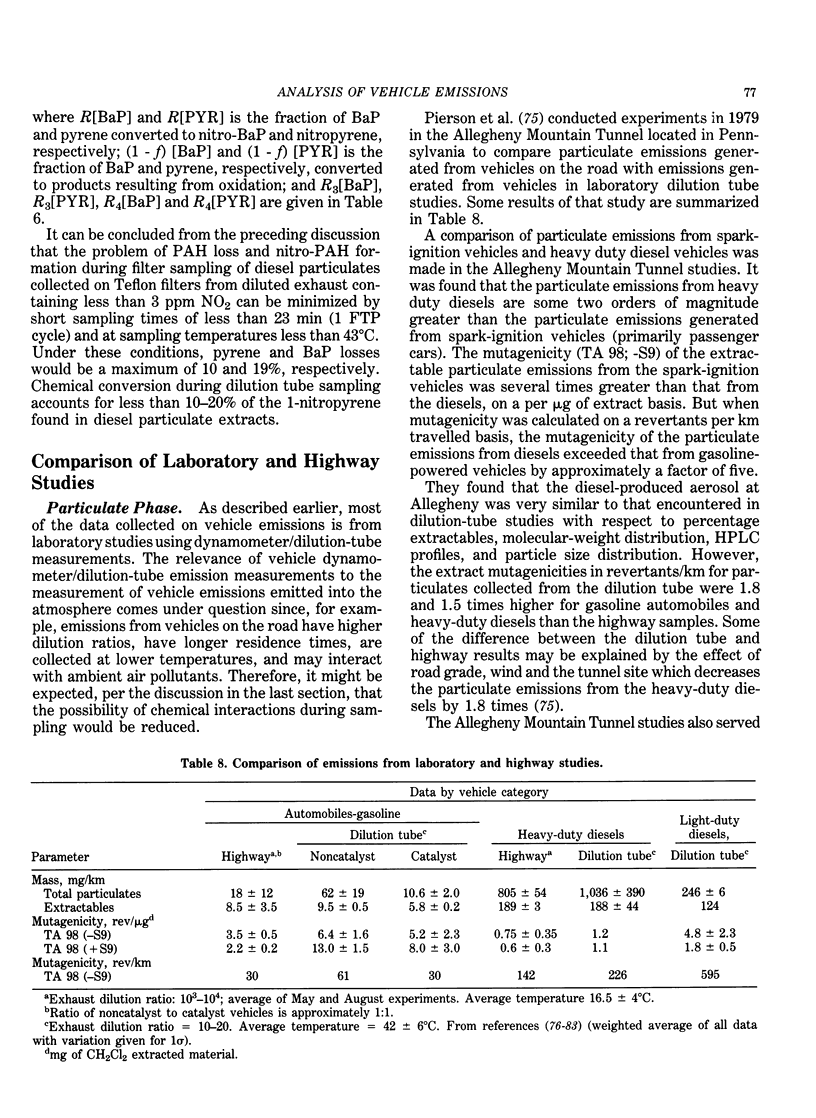



Selected References
These references are in PubMed. This may not be the complete list of references from this article.
- BEGEMAN C. R., COLUCCI J. M. Apparatus for determining the contribution of the automobile to the benzene-soluble organic matter in air. Natl Cancer Inst Monogr. 1962 Aug;9:17–57. [PubMed] [Google Scholar]
- HOFFMANN D., THEISZ E., WYNDER E. L. STUDIES ON THE CARCINOGENICITY OF GASOLINE EXHAUST. J Air Pollut Control Assoc. 1965 Apr;15:162–165. doi: 10.1080/00022470.1965.10468353. [DOI] [PubMed] [Google Scholar]
- Hughes T. J., Pellizzari E., Little L., Sparacino C., Kolber A. Ambient air pollutants: collection, chemical characterization and mutagenicity testing. Mutat Res. 1980 Jul;76(1):51–83. doi: 10.1016/0165-1110(80)90003-2. [DOI] [PubMed] [Google Scholar]
- KOTIN P., FALK H. L., THOMAS M. Aromatic hydrocarbons. II. Presence in the particulate phase of gasoline-engine exhausts and the carcinogenicity of exhaust extracts. AMA Arch Ind Hyg Occup Med. 1954 Feb;9(2):164–177. [PubMed] [Google Scholar]
- Mermelstein R., Kiriazides D. K., Butler M., McCoy E. C., Rosenkranz H. S. The extraordinary mutagenicity of nitropyrenes in bacteria. Mutat Res. 1981 Jul;89(3):187–196. doi: 10.1016/0165-1218(81)90236-6. [DOI] [PubMed] [Google Scholar]
- Pederson T. C., Siak J. S. The role of nitroaromatic compounds in the direct-acting mutagenicity of diesel particle extracts. J Appl Toxicol. 1981 Apr;1(2):54–60. doi: 10.1002/jat.2550010203. [DOI] [PubMed] [Google Scholar]
- Pitts J. N., Jr, Lokensgard D. M., Ripley P. S., VAN Cauwenberghe K. A., VAN Vaeck L., Shaffer S. D., Thill A. J., Belser W. L., Jr "Atmospheric" Epoxidation of Benzo[a]pyrene by Ozone: Formation of the Metabolite Benzo[a]pyrene-4,5-Oxide. Science. 1980 Dec 19;210(4476):1347–1349. doi: 10.1126/science.210.4476.1347. [DOI] [PubMed] [Google Scholar]
- Pitts J. N., Jr, Van Cauwenberghe K. A., Grosjean D., Schmid J. P., Fitz D. R., Belser W. L., Knudson G. P., Hynds P. M. Atmospheric reactions of polycyclic aromatic hydrocarbons: facile formation of mutagenic nitro derivatives. Science. 1978 Nov 3;202(4367):515–519. doi: 10.1126/science.705341. [DOI] [PubMed] [Google Scholar]
- Salmeen I., Durisin A. M., Prater T. J., Riley T., Schuetzle D. Contribution of 1-nitropyrene to direct-acting Ames assay mutagenicities of diesel particulate extracts. Mutat Res. 1982 Apr;104(1-3):17–23. doi: 10.1016/0165-7992(82)90114-2. [DOI] [PubMed] [Google Scholar]
- Schuetzle D., Lee F. S., Prater T. J. The identification of polynuclear aromatic hydrocarbon (PAH) derivatives in mutagenic fractions of diesel particulate extracts. Int J Environ Anal Chem. 1981;9(2):93–144. doi: 10.1080/03067318108071903. [DOI] [PubMed] [Google Scholar]


